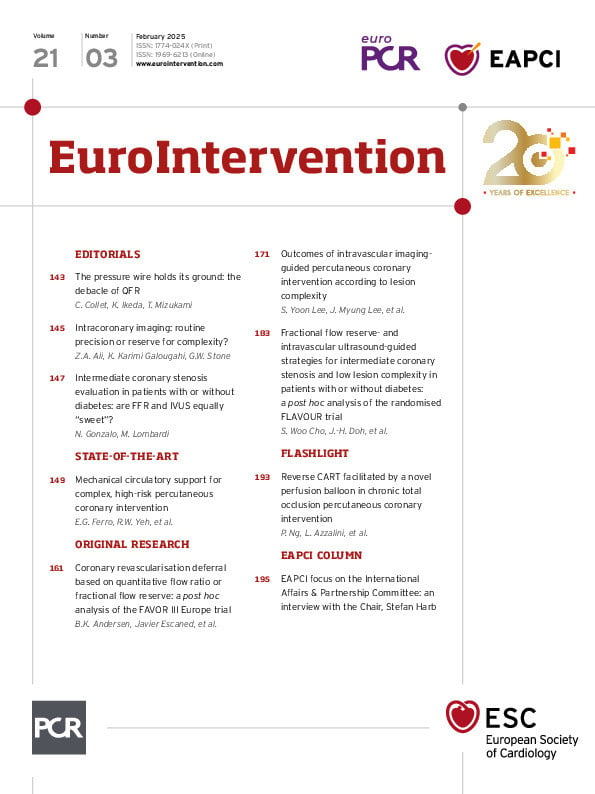Abstract
Background: Safe deferral of revascularisation is a key aspect of physiology-guided percutaneous coronary intervention (PCI). While recent evidence gathered in the FAVOR III Europe trial showed that quantitative flow ratio (QFR) guidance did not meet non-inferiority to fractional flow reserve (FFR) guidance, it remains unknown if QFR might have a specific value in revascularisation deferral.
Aims: We aimed to evaluate the safety of coronary revascularisation deferral based on QFR as compared with FFR.
Methods: Patients randomised in the FAVOR III trial in whom PCI was deferred in at least one coronary artery, based on QFR or FFR>0.80, were included in the present substudy. The primary outcome was the 1-year rate of major adverse cardiac events (MACE), with results reported for two subsets of deferred patients: (1) any study lesion deferral and (2) complete study lesion deferral.
Results: A total of 523 patients (55.2%) in the QFR group and 599 patients (65.3%) in the FFR group had at least one coronary revascularisation deferral. Of these, 433 patients (82.8%) and 511 (85.3%) patients, respectively, had complete study lesion deferral. In the “complete study lesion deferral” patient group, the occurrence of MACE was significantly higher in QFR-deferred patients as compared with FFR-deferred patients (24 [5.6%] vs 14 [2.8%], adjusted hazard ratio [HR] 2.07, 95% confidence interval [CI]: 1.07-4.03; p=0.03). In the subgroup of “any study lesion deferral”, the MACE rate was 5.6% vs 3.6% (QFR vs FFR), adjusted HR 1.55, 95% CI: 0.88-2.73; p=0.13.
Conclusions: QFR-based deferral of coronary artery revascularisation resulted in a higher incidence of 1-year MACE as compared with FFR-based deferral.
Sign up for free!
Join us for free and access thousands of articles from EuroIntervention, as well as presentations, videos, cases from PCRonline.com

